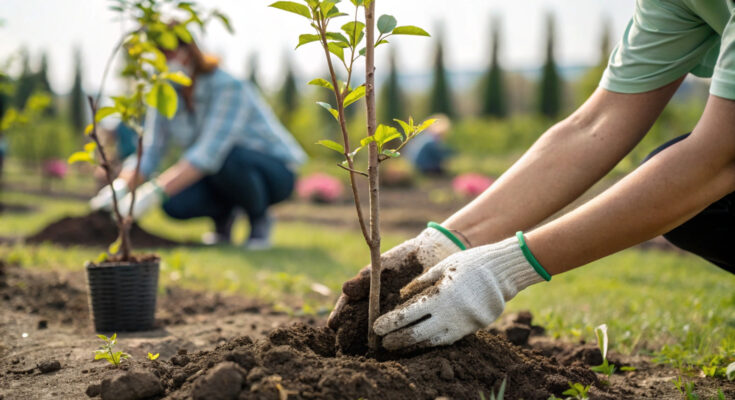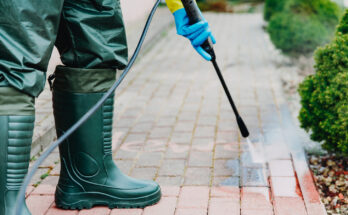Fruit Trees You Should Plant In The Spring For A Healthy Start
Whether it’s a juicy orange or a crisp apple, fresh fruit plucked straight from the tree is one of the sweetest treats around. Luckily, if you live in the right environment, it’s more than possible to have a fruit tree in your own backyard for a near limitless bounty of your favorite produce. Even though trees don’t bear fruit all year, a thriving one can provide enough fruit to be frozen and enjoyed throughout the off-season. With that said, it takes at least two to three years for a fruit tree to produce a harvest after first being planted, and sowing at the right time is one of the best ways to ensure that the wait is worth it. If you’re ready to invest in a fruit tree, spring can be a great season to get started. In fact, for some species like peach, pear, or plum trees, you can get the best results from planting them in the spring.
Planting peach, pear, and plum trees in the spring comes with several advantages, such as giving the saplings plenty of time to take root and start developing before winter hits and stops, or potentially ruins, any progress. Planting these fruit trees in the spring will also give you the best chance at ensuring they make it to harvest season (summer for peaches and plums, autumn for pears). As long as you avoid the mistakes that everyone makes with fruit trees, spring planting should lead to success.
Plant peaches, pears, and plums in the spring
Planting fruit trees in the spring also makes it more convenient to achieve certain soil conditions. New trees don’t do well with overly moist soil — which can happen after winter frost melts and makes the soil soggy. Plus, the ground may also be too hard to plant in the winter. Similarly, springtime planting can create a buffer period for new trees before summer dries out the soil.
Not every type of tree is suited for every environment. For example, peach trees don’t do well in extreme hot or cold (most varieties are best planted in USDA hardiness zones 5 to 8), and have a higher chance of developing fungus in high humidity. Both pear and plum trees are suitable for a slightly larger area — zones 4 to 9. As a bonus, the science of fruit hybridization means that even folks in zone 3 may have luck with certain pear species, like Lomas and Summercrisps. Don’t worry if your environment isn’t well-suited for these fruit trees; you can always try growing one inside, or check out these trees you didn’t know produce edible fruit.
Overview of tree care
Different types of trees will of course need different types of care, but there are a few requirements that new peach, pear, and plum trees all share. Namely, these new trees should be planted somewhere they will receive at least six to eight hours of sun a day, and thoroughly watered weekly until they’ve been in the ground for a year. Afterwards, peach, pear, and plum trees typically only need to be watered once every week and a half in dry conditions. These fruit trees also have a similar preferred soil pH value: around 6 to 7. There is some variation here; peach, plum, and pear trees thrive in slightly more acidic, neutral, and basic soil respectively.
Although some initial care for these trees is similar, it is not identical, especially when it comes to pruning. Both peach and pear trees should be pruned in the winter, but plum trees need to be pruned in summer to avoid being damaged by winter diseases.
Following the care requirements for your new pear, peach, and/or plum tree, along with giving them a head start by planting in spring, is a surefire way to keep your plants healthy. Another way to help your new trees flourish is by planting them next to companion plants that will help them grow, like this common veggie you should plant next to a peach tree.



